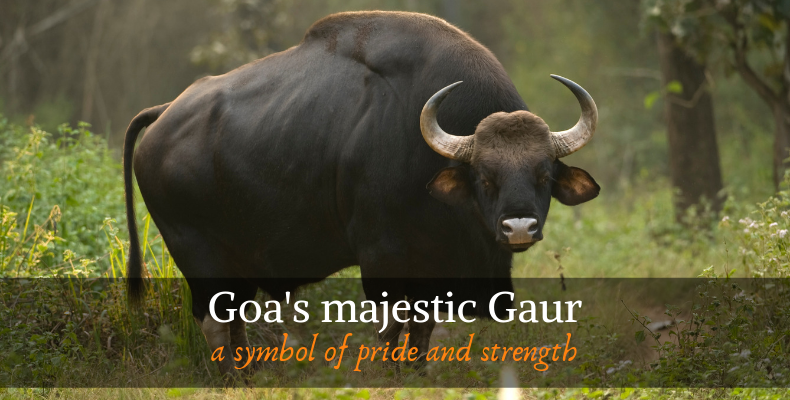When we think about symbols for Goa, so many come to mind. A beach lined with palm trees, and the setting sun is rather popular. There’s even the new Atul Sethu bridge over the Mandovi River which serves as a symbol of vision and technological advancement. But there is still one more very vibrant symbol that has become extremely popular in the recent past, especially because it was chosen as the symbol (and mascot) for Goa’s ISL Football Team FC Goa – and that’s the Gaur. The strong, resilient, and majestic Indian Bison, which also happens to be the State animal of Goa. Since 1986, the Indian Bison or Gaur has been listed as ‘vulnerable’ on the IUCN (International Union for Conservation of Nature) Red List. In India, the Gaur is a Schedule-1 animal according to the Wildlife Protection Act, making it illegal for them to be hunted.

The making of an Indian Bison
The Indian Bison or Gaur truly is a majestic creature. The state animal of Goa can reach an impressive weight of about 1500kgs. The look of the Gaur is quite distinctive, with a rather pronounced shoulder hump (especially in the males), and horns on either side of their heads, that grow to be an impressive 110cms. An interesting fact to note is that the Hindi name for the Indian Bison, Gaur, actually means fair-skinned, fair, or white – the complete opposite of the adult Indian Bison looks like. Though a newly born bison is indeed a light golden-yellow, which soon changes to fawn, then to light brown, and so to coffee or reddish brown.
Bison tend to congregate in forested hills and grassy areas. They are largely confined to evergreen forests or semi-evergreen and moist deciduous forests, but also occur in deciduous forest areas at the periphery of their range. Forests are essential to the existence of the Bison. Being herbivorous animals, they feed on grass, herbs and shrubs, with a high preference for leaves. They also feed on coarse dry grass, and bamboo. The Indian Bison lives in small groups of about 30-40 individuals, reproducing mainly between December and June. The average Bison lives to be about 25 to 35 years.
Controversy surrounding the Gaur
In February of 2016, it was declared that along with the Peacock (India’s National Bird), the wild boar, and the monkey, the state animal of Goa, the Indian Bison was to be tagged a ‘nuisance animal’ because they were creating problems for farmers, and destroying their cultivation in rural areas. The declaration clearly did not go down well with environmentalists, especially since the Gaur is on the protected species list. The then Agriculture minister Ramesh Tawadkar had said that he was completely aware that the national bird and the state animal of Goa was part of the list, and that the government would have to follow a procedure wherein a case had to be prepared which will allow them to be declared as a ‘nuisance’. This involved compiling a record of how many complaints were received from farmers of crop destruction by these animals. A few days later, post numerous reviews, and mounting opposition from environmentalists, the Peacock and the Indian Bison were removed from the list.
What are your thoughts on Goa’s state animal? Do you think the Gaur really is a nuisance or is there more to the story? Sound off in the comments below. We’d love to hear from you.


